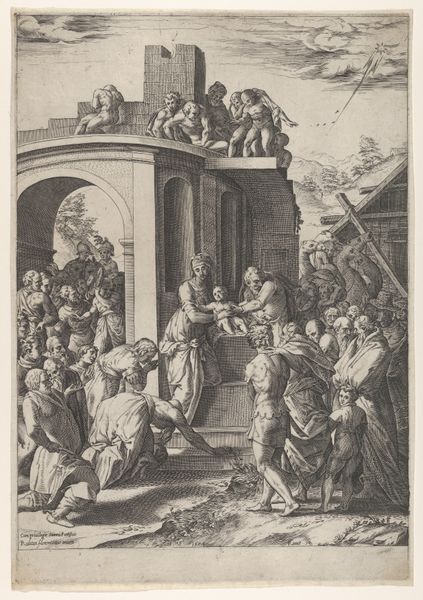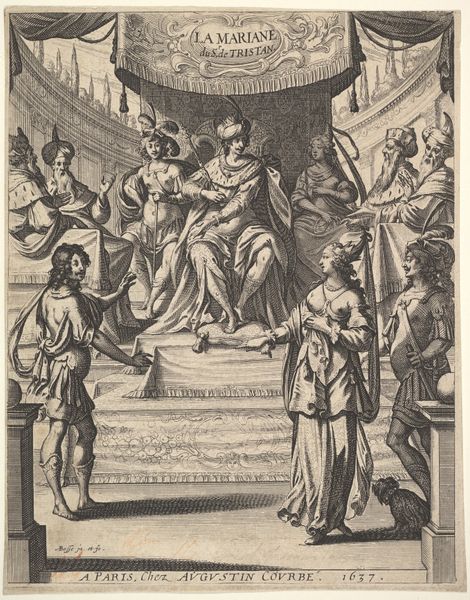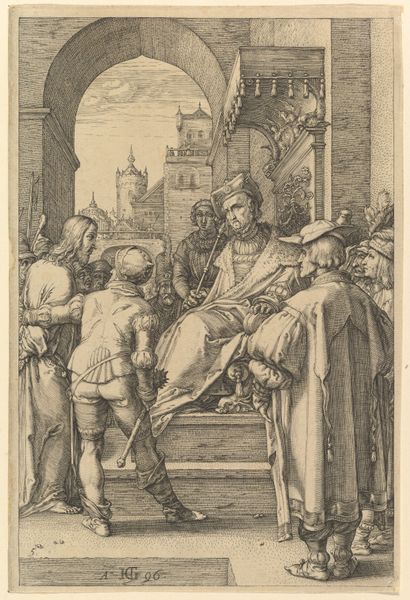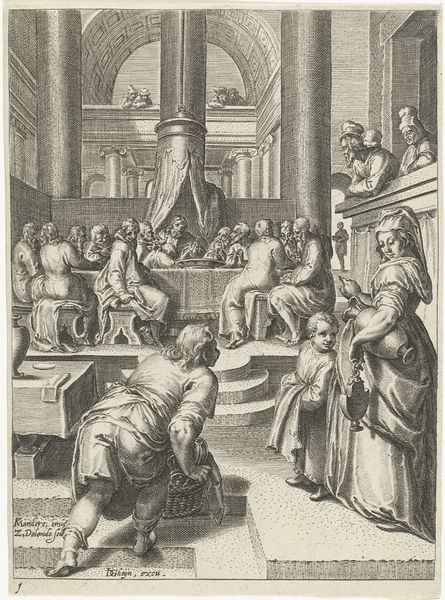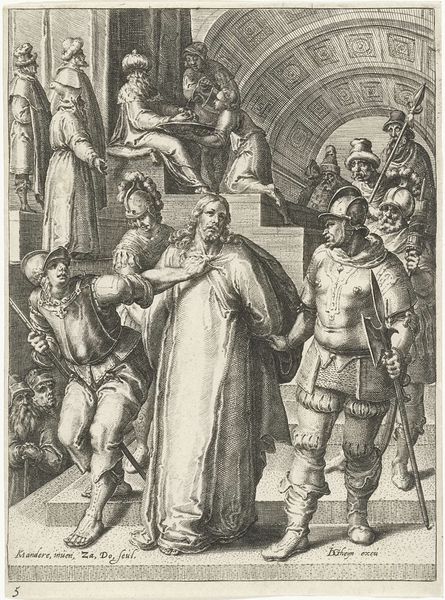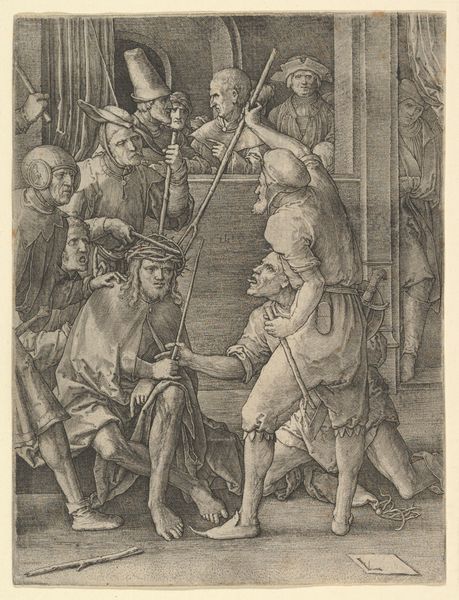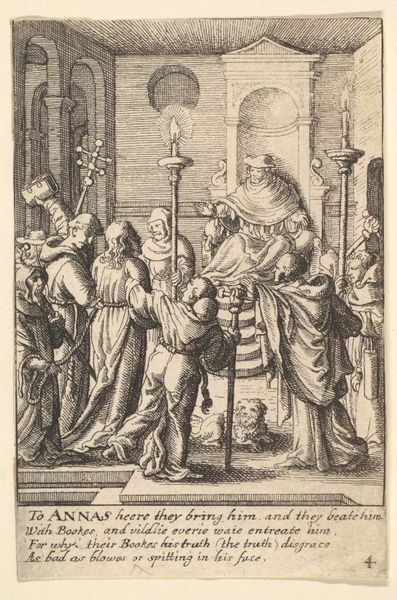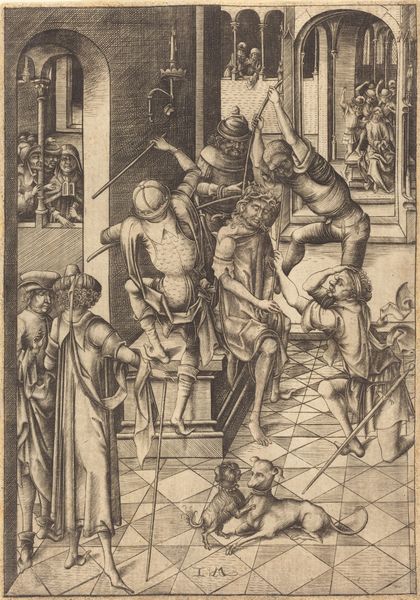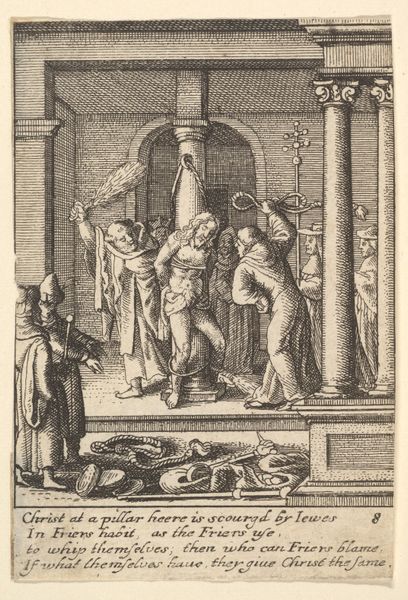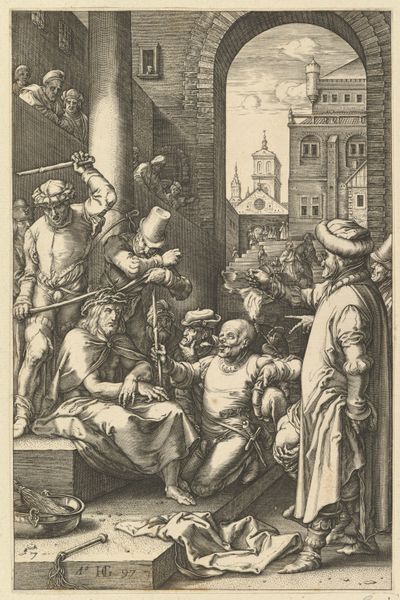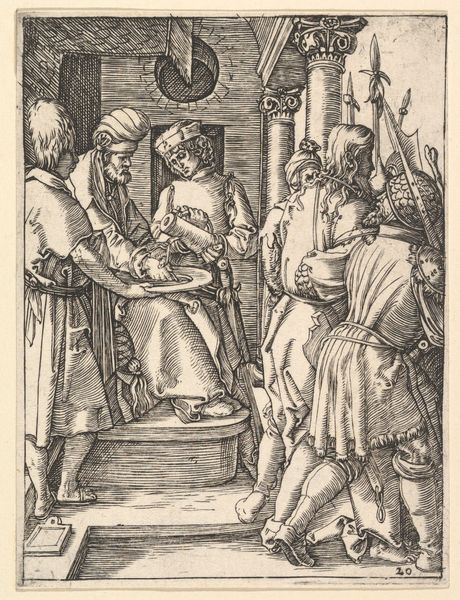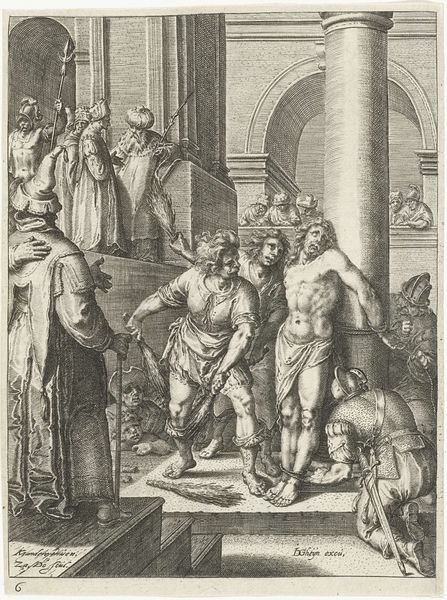
Christ presented to the people by Pilate, standing atop stairs at left with a crowd at right 1586
0:00
0:00
Dimensions: Sheet (Trimmed): 16 1/8 in. × 11 in. (41 × 27.9 cm)
Copyright: Public Domain
Curator: Looking at "Christ Presented to the People by Pilate," an engraving by Matthaeus Greuter, made around 1586. Editor: Immediately, the texture of the scene strikes me. The density of the lines gives a weight to the whole composition. Look how each figure seems to vie for space, reflecting that moment's charged atmosphere. Curator: Yes, Greuter captured a very theatrical moment from the Gospels. Consider how Pilate presents Christ to the crowd; this piece is laden with political weight—reflecting the power dynamics between Roman authority, religious law, and public opinion in Renaissance Europe, not just in Biblical times. Editor: Absolutely. You see it in the architectural background, mimicking the staged nature of public displays of power. And look closer, at the hands, the robes, all etched with meticulous detail, showing where the artist invests labor. It points to the booming print industry of the period. Prints like these democratized images. Curator: Exactly, and circulated specific narratives widely. It also gave artists a platform; look at the Baroque dynamism already in play here, a sign of shifts to come in the broader art world. These images served clear propagandistic functions during periods of religious and political upheaval, which is not a trivial consideration here. Editor: These engravings, however, become objects, too. Think about the paper, the ink, the press used. I wonder who originally held this engraving; how it may have moved through hands shaping perceptions of faith through material exchanges? Curator: It’s fascinating to consider that now. This work offers so much on the confluence of political spectacle, public perception, and, indeed, material dissemination through prints during a crucial period of religious reform and cultural change. Editor: A testament to how images operate within larger networks— labor, distribution, faith, and political control all made visible through an impressive layering of ink on paper.
Comments
No comments
Be the first to comment and join the conversation on the ultimate creative platform.
